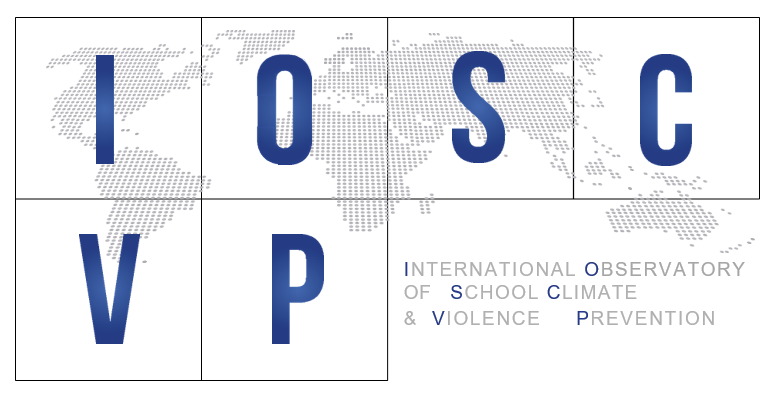SIG 1 – Climate Improvement: Research, Policy and Practice
Please check which of the SIGs you would like to join (see SIG descriptions above):

Antonella Brighi, PhD
Faculty of Education, Free University of Bolzano, Bressanone, Italy

Sanjay Nanwani, PhD
Universidad Externado de Colombia, Bogota, Colombia
For over a century, there has been a growing interest in school climate. While studies on ‘climate’ originally applied to the industrial and organizational sphere, as early as in the turn of the 20th century, Perry (1908) and Dewey (1916) recognized that the distinctive culture of a school influenced the life and learning of its students. Since then, there has been a gradual rise in systematic, empirical studies of school climate improvement from multiple but complementary perspectives: research, policy and practice. Today, climate improvement in educational settings is all-encompassing and integrates the ecology, and physical and material dimensions of a school; its social, emotional, and relational dimension; its culture, including belief systems, values, and cognitive structures. While climate improvement in educational settings has broadened in scope, it remains a viable, data-driven improvement strategy.
It is in this light that the Climate Improvement: Research, Policy and Practice SIG (SCI-RPP) seeks to further conversations by creating an active international community that advances meaningful debates on aspects relating to climate improvement in educational settings. These conversations seek to bring academics, policy makers and practitioners around the world closer, as we work together, but also in our respective communities, to ensure safer, healthier, more supportive and engaging educational contexts (schools, classrooms, on-site and virtually mediated learning interactions, among other).
Main objectives of the SIG
- Furthering systemic and instructional universal climate improvement efforts that are intentionally designed to support wellness; social emotional and academic development; and safe, supportive, equitable and engaging climate for learning.
How the main objective of the SIG is attained will be defined through conversations with research, policy and practice leaders around the world which in turn will spur concrete actions that will be taken in the research, policy and practice domains. The conversations will be framed through a wide array of themes and questions:
- How are understandings of school climate evolving at a time when education is being resignified and practiced in an increasingly globalized, interdependent and technology-mediated world?
- What does climate improvement in educational settings mean in different social, cultural and political contexts?
- What strategies in different social, cultural and political contexts can be replicated, adapted and scaled to further climate improvement? What can be learnt from different sociocultural contexts around the world to nurture positive learning climates?
- How can, and does, climate improvement contribute to safer, healthier, more equitable and engaging learning environments?
- What types of educational climates advance social-emotional and academic development and learning?
- What learning climates nurture the development of democratically skilled and democratically disposed citizens?
We know that the above questions will raise further questions which will shape research, policy and practice guidelines and recommendations. The SIG seeks to address the complexity of Climate Improvement: Research, Policy and Practice, acting as a catalyst and international platform for climate improvement in learning environments.
SIG 2 – Understandings and measurement practice: school climate, convivencia, and violence prevention

Adriano Moro, PhD
Carlos Chagas Foundation (FCC), São Paulo, Brazil

Nikolett Arató, PhD
Eötvös Loránd University
Budapest, Hungary
Several studies around the world have shown that the concept of School Climate and its evaluative dimensions are polysemic and complex. At the same time, the great importance of assessing the school climate is recognized for improving the quality of education, in the most different aspects of the educational context. For instance: the improvement of the learning and relationship environment; the promotion of the well-being of the people who live in the school; the improvement of academic performance; the reduction of coexistence problems; strengthening the feeling of belonging to the school space, among others.
Furthermore, school climate is highly associated with the appearance of school violence. There are several types of school violence, but the most studied of these are bullying and cyberbullying (e.g. risk and protective factors, consequences, and effectiveness of prevention and intervention programs). However, there are still several questions remaining regarding the definition of cyberbullying, there are also measurement issues to solve, and longitudinal studies are needed to further understand these issues. Additionally, the other types of school violence (e.g. teacher to student, student to teacher, and teacher to teacher aggression and/or conflict) need to be further studied as well, since these types may also affect the mental well-being of the school personnel and students, cause unsafe school climate, and can decrease the academic and work performance, etc.
Main objectives of the SIG
One of the main objectives of the SIG constitution refers precisely to deepening international conversations about research, policies and practical understandings about School Climate phenomenon, as well as evaluation strategies and, above all, the best ways of data return to schools and the procedures of reflection processes with the school actors who participate in the evaluation. Additionally, the SIG could be a great opportunity to start international conversations about the definitional and measurement issues regarding bullying and cyberbullying, broaden the research to the other types of school violence (e.g. start longitudinal and/or cultural comparison studies together) and to try to find a way to use this data in policy making and in the development of prevention and intervention programs.
- How should we solve the definitional and measurement issues of bullying and cyberbullying research?
- How should we define and operationalize the other types of school violence (e.g. teacher to student, student to teacher, and teacher to teacher aggression and/or conflict)?
- What has been the concept of school climate and its constituent dimensions used to assess this phenomenon in different countries?
- In assessing the School Climate in your country, what types of measurement instruments have been used and what are the strategies for returning the results to schools?
SIG 3 – School Violence: Research, Policy and Practice

Eva Romera, PhD
University of Cordoba, Cordoba, Andalusia, Spain
The field of school violence is at the core of research on social and healthy development and continues to be a multifaceted area of research in which individual and social processes are involved. Although there is a vast number of studies about causes, consequences, protagonists and implications of school violence, it is necessary to continue working in the definition and design of theoretical frameworks that combine different facets of school violence (i.e., cognitive, emotional, social and moral topics, combined with socialization processes). It involves advancing from a piecemeal approach to a more holistic perspective from a theoretical, empirical, and methodological perspective.
Intervention programs to prevent school violence have advance significantly in improving social and emotional learning for the prevention of school violence, both online and offline, paying special attention to the phenomena of peer violence. Research about how to implement ethical and cultural approaches that consider minority groups and cultural differences is essential in the next steps. Mainly in the online scenario, where the sensitivity to harm to others is weaker and a higher disinhibition eases immoral behaviours, mainly to vulnerable groups.
Main objectives of the SIG
This SIG is designed to promote links and themes to debate that are relevant to prevent school violence at a research and practical level, where researchers, practitioners and policymakers share knowledge, experiences and needs and work together from a cross-cultural perspective. New and traditional violent phenomena are present in our schools and new questions are open to guide interventions. This SIG promotes the reflection and advance in the next questions:
- How to advance towards holistic models to prevent school violence?
- What new methodological approaches are required to deep understanding school violence?
- What do systematic reviews need to go to explore and understand harassment?
- What do we need to identify good practices based on scientific evidence from a cross-cultural approach?
- How to design interventions aimed to promote changes in the whole educational community?
- How to design interventions to promote sensitivity to out-group members?
- What educational strategies lead to ethical practices?
- How to explore the role of teachers and peer leaders in the changes in the community?
- What we know about new forms of virtual violence: sexting and hate speech?
